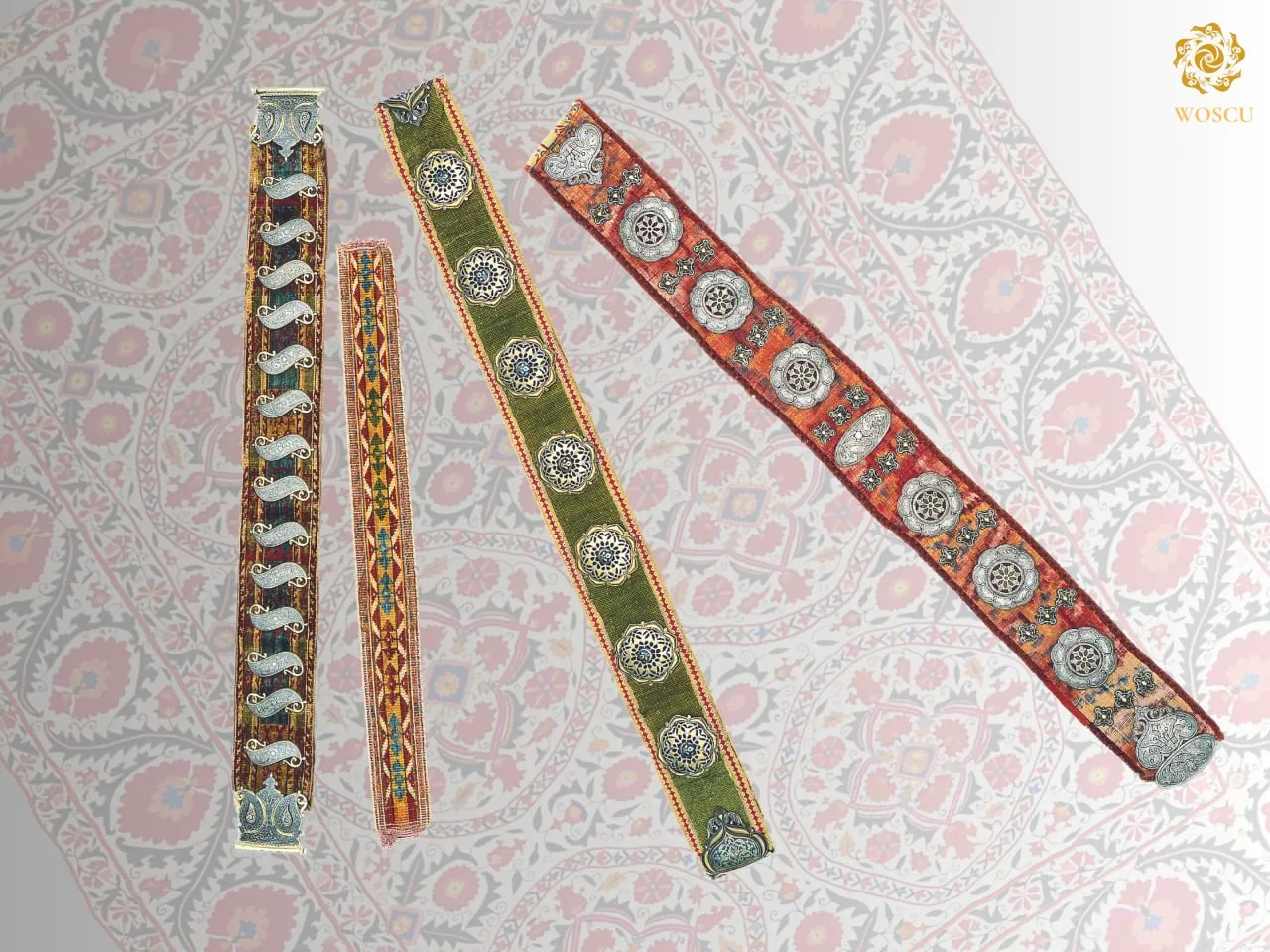Energetic dynasties temporarily restored the old order in the Khanates of Khiva and Kokand and the Emirate of Bukhara, as a result of which long distance trade thrived once more, as did the cultures of both the towns and the courts.
In the Emirate of Bukhara with its mixed population of Uzbeks, Tajiks and Turkmen and other, urban craftsmen fashioned jewelry, amulets and ceremonial weapons in the styles of their respective customers. Gold embroidery on state robes and saddlecloths was men’s work. Silk embroidery on domestic textiles, dresses, headwear and ornaments for horses was done by women. Ceremonial belts, whose possession was a privilege of the upper class, are traditional adornments with an ancient pedigree among the Central Asia steppe peoples. The floral decorations on all these applied artworks reflect Ottoman, Caucasian, Persian, Indian and Far Eastern influences.
The same holds for the often magnificently decorated weapons found in Central Asia. Knives and daggers were skillfully adorned with gold and semi-precious stones, among which turquoise was especially popular. The short sword was widespread primarily in the Caucasus in the 18th and 19th centuries, but – following the Russian conquest of the mountainous region between the Black Sea and the Caspian Sea – it was introduced to the court of Bukhara by émigré armorers and came into fashion there in the second half of the 19th century.
Thanks to a generous donation from a private collection, the Armory of the Dresden State Art Collections has been able to present some outstanding examples of Uzbek craftsmanship in the permanent exhibition of the Turkish Chamber since 2015. In addition to various daggers and knives, ceremonial belts, headwear, amulet cases and textiles from Bukhara, Kokand and Shahrisabz, the Dresden Armory also has a linked diadem and an ikat textile from Samarkand.
You can learn more about the topic in the book-album "Collections of the Federal Republic of Germany" (volume XI) in the series "Cultural Legacy of Uzbekistan in the World Collections".
The main sponsor of the project is the oilfield services company Eriell-Group.


